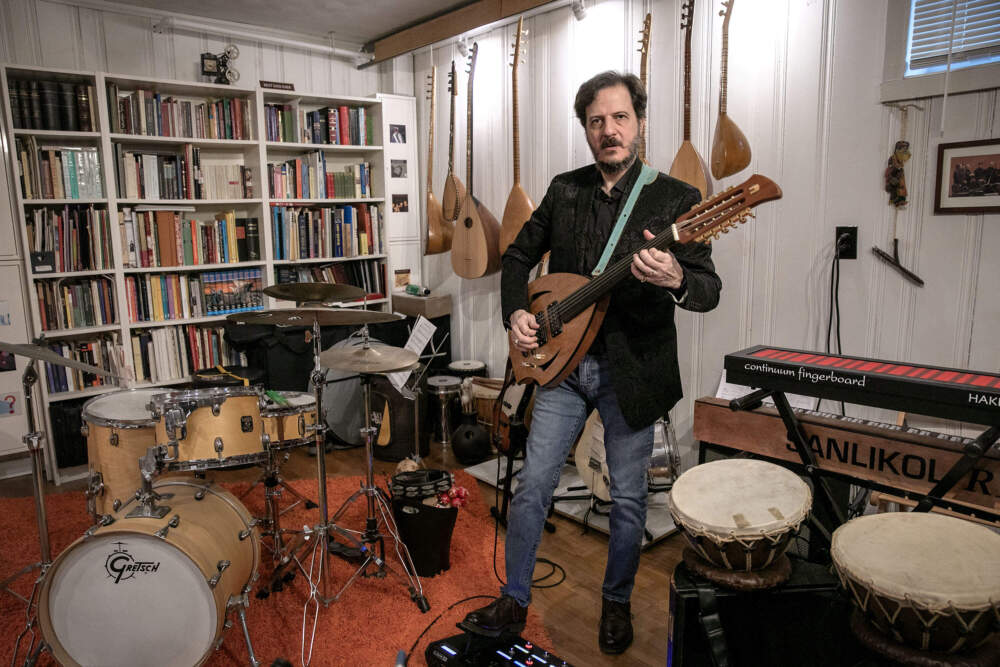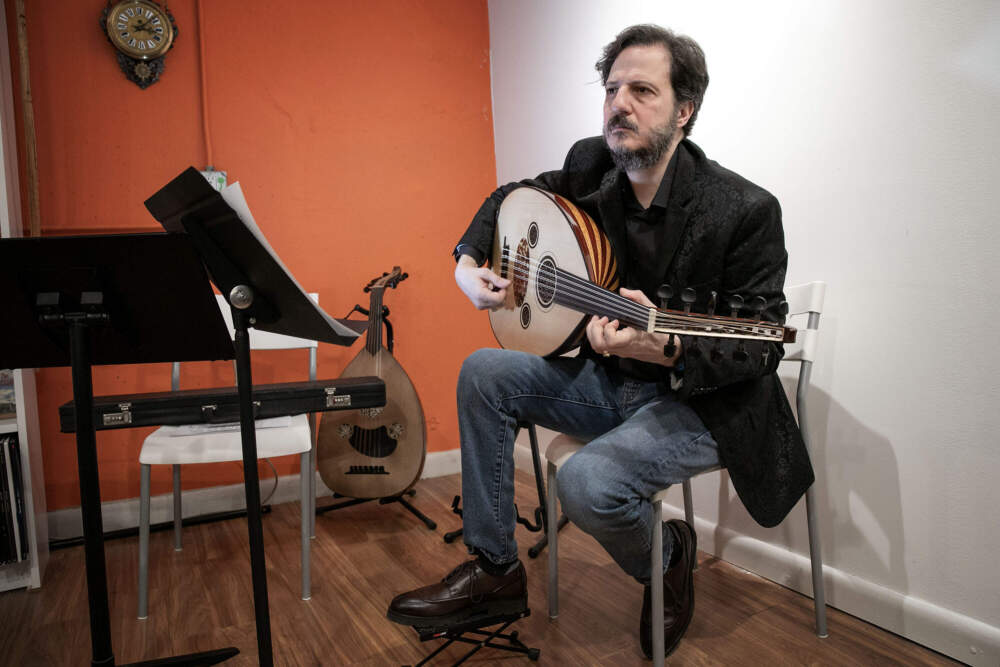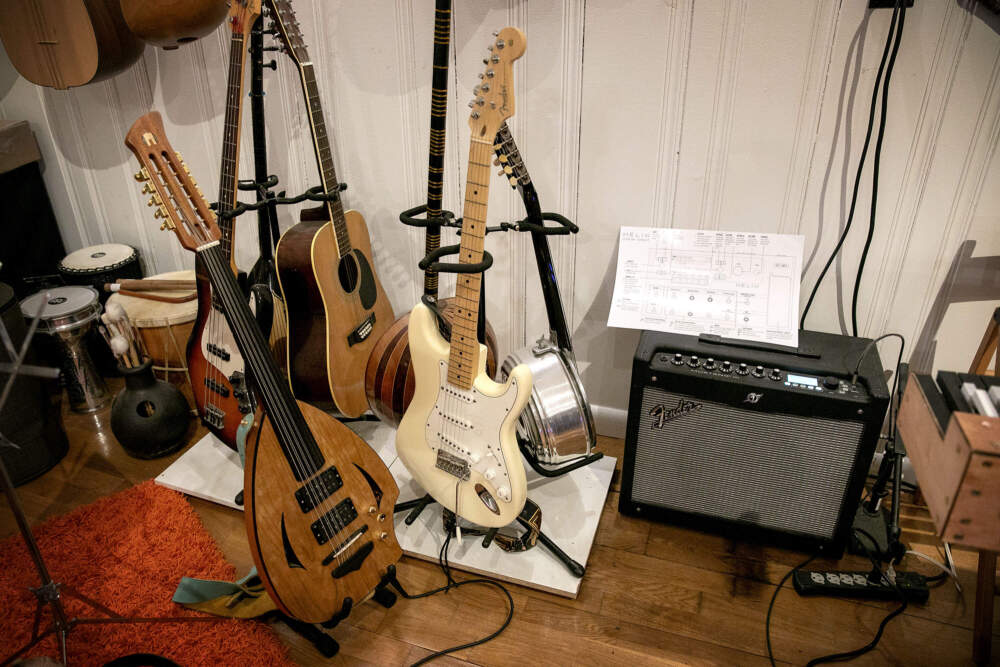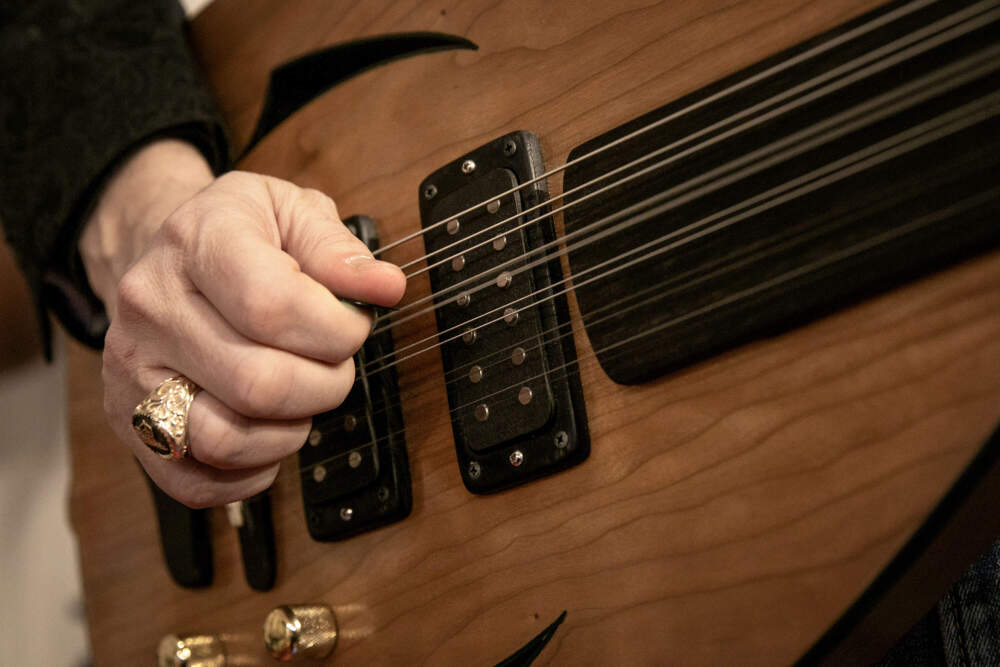Advertisement
This Turkish musician channels Ottomans and rock gods on the electric oud
Resume
Grammy-nominated Turkish composer and musician Mehmet Ali Sanlikol would like to introduce his one-of-a-kind dream instrument. It’s been decades in the making, and on Wednesday, March 26, his custom-built electric oud will take the stage with the Dünya Ensemble during a free concert at the New England Conservatory’s Jordan Hall.
Sanlikol’s singular oud transforms centuries-old Turkish sounds and — when the urge strikes —allows him to unleash his inner rock star.
It all started in Istanbul, where Sanlikol grew up and played classical piano. But as a teen, he also wanted to rock. “I was really into Led Zeppelin, Pink Floyd, Deep Purple — bands like that,” Sanlikol said, then paused before adding, “Jimi Hendrix, oh my, how did I forget him?”
He also loved jazz and moved to Boston to study composition at Berklee College of Music in 1993. "And then, strangely enough, seven years after my arrival in the United States, I rediscovered my roots and started learning Turkish music.”

The musical polymath’s home studio in Belmont is filled with Eastern and Western instruments. Over the years, he’s amassed a collection that includes synthesizers, a baby grand, a cream-colored Fender Stratocaster guitar (like the one Hendrix played), Turkish flutes, kettle drums and pear-shaped ouds.
“The oud is actually widespread all over the near and the Middle East,” Sanlikol said. “Greeks, Kurds, Turks, Armenians, Arabs — we all play it.”
His Turkish oud has a long, thin neck and it makes resonant, twangy sound.
“Both my grandmothers played the oud," he explained. "That may have played a role in me picking it up.”

Sanlikol recalled how his musician friends used to ask him to bring his acoustic oud to jazz shows. “And very quickly it became apparent that just putting a mic in front of it was not going to do it,” he said. “Especially when the drums start playing louder, what happens is you need to turn up the mic, and of course it starts feeding back."
So Sanlikol began hunting for electric ouds. But he only found examples with rudimentary amplification and nylon strings that, to his ear, sounded terrible. “For someone who has grown up with what the electric guitar has achieved, I started thinking, 'The classical guitar went through a certain transition to get to that point, why not do it with the oud?' ”
It took two decades to find a luthier willing and able to take on the challenge. Turns out that craftsman was Sanlikol’s friend Mac Ritchey who also plays the oud. Together, they set out to design and build a modern version of a centuries-old instrument. Sanlikol had gone through a similar development process after he commissioned a 3D-printed, digital microtonal keyboard.
Advertisement
“When you're in the preparation phase for these things, you can become anxious a little bit,” Sanlikol said. “You know, it can be a flop.”
But when the moment of truth arrived, Sanlikol picked up the beautifully crafted, steel-stringed oud, and realized, “it was kind of meant to be,” he said. “It’s a semi-hollow body instrument — and it is still pear-shaped — but the body is slightly smaller than an acoustic oud.”
This electric oud looks and sounds a bit like an electric guitar, but its timbre is different. The instrument enables Sanlikol to transform age-old Turkish music modalities, which are complex systems of scales. “I can explore different sonic possibilities, and I still combine Turkish modes.”


Sanlikol’s nimble fingers flew across the electric oud’s 11 strings (six double, one single) as he demonstrated its cross-cultural versatility. Now, he can channel the spirits of Ottoman Turks along with his rock guitar heroes, like Stevie Ray Vaughn. “Of course, I started exploring some pretty hard distorted sounds as well,” he said with a smile.
Sanlikol was also compelled to experiment with the myriad musical languages he has under his belt. He filmed a video for a tune he wrote titled “Talk About a Turkish Blues.” He said, “I've played the American blues for so long on the guitar, and then somehow it came out of me.”
As Sanlikol’s blues composition builds to a crescendo, he lets loose with blistering, unbridled riffs. “When I turn the distortion on, and I start going on that wah-wah pedal, I don't feel like I'm 50 — I feel like I'm 15,” he said, laughing. “That’s a good feeling.”
Recently, the musical explorer began finger-picking his electric oud in a Bluegrass style. “I’m bringing a new sound, a new vision — not to just jazz or the blues — but also to concert music,” he said.
Sanlikol sees himself as a musical translator, and hopes he expands people’s appreciation of the musical styles he’s been merging for more than 20 years. He’s internalized global sounds, he said, that can’t be defined by the oft-used phrase, “East meets West.” For him, “It’s actually not really a meeting, they’ve met a long time ago. Ever since I was born, my mother was a classical piano teacher.”
Sanlikol, who's on faculty at the New England Conservatory, looks forward to taking audiences on a musical journey through time — from 17th century Istanbul to the future — with a little help from his electric oud.
This segment aired on March 26, 2025.


